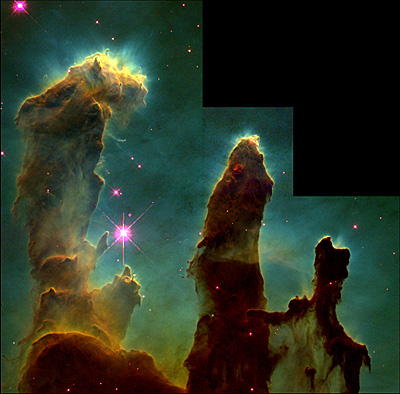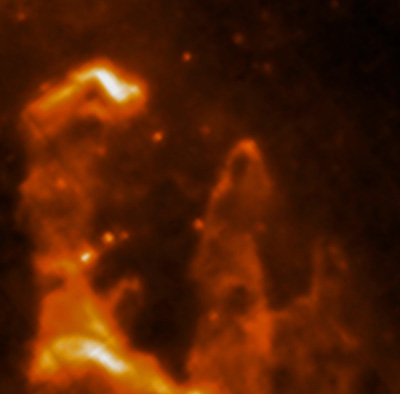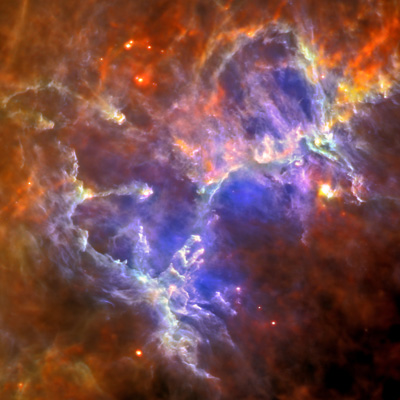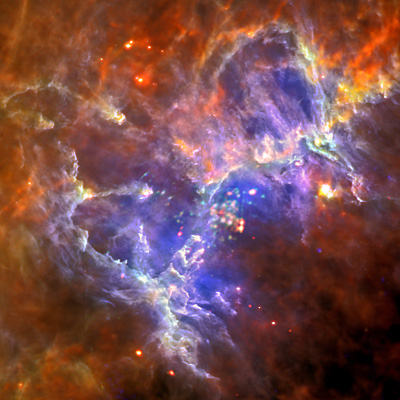|
The Eagle Nebula, also known as Messier-16 or NGC 6611, is a nebula visible in the Southern Hemisphere. This three color image was taken by the Wide-Field Imager camera on the MPG/ESO 2.2-meter telescope at the La Silla Observatory. One easily sees the Eagle, and at the heart of the Eagle are the Pillars of Creation.
The Hubble Space Telescope imprinted the Eagle Nebula in the public’s mind in 1995 with the publication of the Pillars of Creation. The Pillars can be seen above in the middle of the lower third of the image. Hubble’s image (below) stands the pillars on end, whereas the ESO image shows them tilted over toward the right.
In this composite image (above) of the Pillars’ star forming regions, the tallest pillar is about four (4) light years high. The images were observed using a combination of SII/H-alpha and OIII filters. Other wavelengths allow us to see inside the gas clouds that surround these regions. Up to 1998, the ESA Infrared Space Observatory (ISO) was the most sensitive mid infrared telescope ever built. ISO observations (below) were performed at 7 microns and 15 microns, aiming to detect embedded sources in the pillars.
Near-Infrared imaging by The 8.2m-diameter Very Large Telescope’s (VLT) ANTU telescope (below), enabled astronomers to better penetrate the dust that obscures the interior of the pillars. This has allowed researchers to investigate the ‘evaporating gaseous globules’ (EGGs) first detected in the Hubble images. It looks like eleven (11) of these EEGs probably contained new stars. One can also see stars in the tips of the pillars.
Recently, new images of the Eagle Nebula (below) in the far-infrared and sub-millimeter part of the spectrum have been release by the Herschel Infrared Observatory.
The image is color coded. 70 micron radiation is in blue and 160 microns in green from the Photodetector Array Camera (PACS). Red codes for 250 micron emissions using the Spectral and Photometric Imaging Receiver (SPIRE). The image shows the temperature of the dust, which ranges from 10 degrees Kelvin (above absolute zero) to 40 degrees Kelvin. Herschel operates from a Lissajous orbit around the second Lagrangian point of the Sun–Earth system (L2), a virtual point located 1.5 million km from Earth in the direction opposite to the Sun. The X-Ray image below was taken by the XMM-Newton Observatory, which was launched in 1999. The image is color coded for the different energy levels observed: red: 0.3–1 keV, green: 1–2 keV and blue: 2–8 keV.
Researchers are investigating a theory that the Eagle Nebula is being powered by a hidden supernova remnant. They are trying to detect a faint X-ray emission in the nebula. If no emission is found beyond what the Chandra and Spitzer Observatories have already detected, this would support the supernova remnant theory. A composite image from Herschel and XMM-Newton is shown below:
|
-
Subscribe
Subscribed
Already have a WordPress.com account? Log in now.








You must be logged in to post a comment.